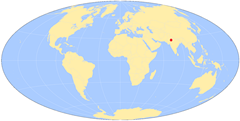 Greetings!
Greetings!
Sorry that this week’s offering is a little late. No excuse really, except that I’ve been busy booking up future travels including next April’s epic trip to North Korea and my first time on Eurostar for a few days in Paris in February. So excited!
Keep travelling!
Uncle Travelling Matt
Uncle Travelling Matt
Flickr album of this journey
Links to other parts of the the travelogue:
Pushkar (II)
The next day I explored Pushkar, mixing the “real” India with the faux. For example, I breakfasted on falafels, unknown elsewhere on the Sub-Continent yet the meal of choice here, probably because every second tourist seemed to be an Israeli[1] before getting lost in the alleyways where not a backpacker was to be seen and the local women wore gorgeous, colourful Rajasthani dress. I contemplated visiting a shrine perched atop a nearby mountain, (a thirty minute walk my guidebook said), but decided against it; this was a town to take it easy in and so instead I decided to circumnavigate the pool, stopping off anywhere en route that interested me.
Going down to the pool at the Queen Mary or Gandhi Ghat[2] I was accosted by a Brahmin priest who conducted a ritual on me which involved marking my forehead with coloured powder and tying a sacred thread around my wrist. To be honest, it was more a money-making ploy than a genuine spiritual experience since he demanded an exorbitant fee afterwards which I tried to haggle him down from, but the threads stayed around my wrist for many months afterwards until they finally disintegrated, a reminder of my trip to that sacred pool and the eternal presence of the Divine.
I visited the Brahmā Temple, dedicated to the Hindu god of creation. As another indicator as to how confusing Hinduism can be to the outsider, I thought that this was dedicated to Brahma, the Hindu One God of thousands of faces of whom all the other deities are but aspects of, but no, I later learnt that this was Brahmā not Brahma and the two are different entirely, Brahmā being one of the Hindu Holy Trinity (and thus an aspect of Brahma). Nonetheless, this Brahmā temple was rare, one of but a handful in all India.
This is all due to the legend of Pushkar's founding. Apparently Brahmā was in search of a place for Mahayagna (a kind of ritual) and found Pushkar suitable except that, after a while, a demon named Vajranash started killing people there so Brahmā intoned a mantra on a lotus flower, thus killing the demon but in the process one of the leaves fell to the earth creating the sacred pool. Once the demon had been dealt with, Brahmā decided to perform a yagna to help protect Pushkar from future demonic incursions, but to do so he needed the help of his wife. Alas, Saraswati his consort was nowhere to be found so instead Brahmā married Gayatri, a local Gurjar girl, who then performed the yagna. This act though, made Saraswati furious and she cursed her husband saying that he would be worshipped in Pushkar alone. To this day, the priests at the temple are all Gurjars.
I wandered on round the pool, stopping to listen to chanting in one temple before pausing for a shisha pipe and mint tea at the Sai Baba Garden run by a guy called Shiva Sankar. He told me about his life and invited me to a particularly auspicious Shiva temple in his village of Kharekhari nearby. I would have loved to have gone and partaken in his hospitality but, alas, my schedule was tight and my train to Delhi left Ajmer that night so I had to turn him down.
After finishing my pipe I moved on, now on the side of the pool with few temples and even fewer tourists. By the side of the road, fenced off and with a sign declaring it to be an historical reserve, were the ruins of an ancient temple. Anywhere else, these would have been the prime attraction yet here they were all but forgotten.
I wandered over the dam and back into the town, listening to a little of the test match commentary that a hawker had blaring from his radio before returning to my hotel to relax awhile out of the midday sun.
Once rested I climbed up to the roof of my hotel which commanded stunning views over all Pushkar and there I made a video. Of course, I'd been making videos throughout the entire trip – the first time I'd attempted to record my travels in such a way – but those had all concerned individual aspects of the journey, but this was more of an overview for quiet and sacred Pushkar was the ideal place to sit back and try to get a handle on all that I'd seen and experienced. I talked about the conflicting emotions that I'd had on my trip – my initial negative impressions, the sacredness of the Golden Temple, sightseeing fatigue in Agra and Jaipur, disappointment in Ajmer and the unexpected gem of Pushkar where, I was beginning to realise I was starting to fall in love with India. I knew that I could have stayed in that little town for weeks if I'd had the time – many people do – and it was with a tinge of sadness that I knew I would be leaving that night.
I went down to the Varan Ghat once more for sunset which was indescribably beautiful again and this time I fell in with Vini from the Krishna School of Music who was teaching a rather spiritually-inclined Portuguese girl some Rajasthani folk singing. I joined in and after the sun had dropped behind the hills we retired to his school, (a room about half the size of my bedroom), where we shared each other's musical traditions in a folk-off; 'Bread and Fishes' and 'Ned of the Hill' interspersed with Qawali and Rajasthani melodies.[3]
Bidding Vini adieu, I decided to kill some time and catch-up with reality in an internet café, not entirely successful though since there was a power cut soon after I arrived. What was more fascinating though was the proprietor who was writing out the word “Rama” hundreds of times as a spiritual exercise.[4] Then I gave my short sojourn in Pushkar the perfect ending by walking down the main street to the 'Rainbow Rooftop Café' for a drink and encountering a rather boisterous and beautiful traditional Rajasthani wedding procession on the way with the groom on a horse and retainers carrying large electric chandeliers. Once again, the word that came to mind was “incredible”.
Next part: Delhi – New Delhi and the National Museum
[1] And I'm not sure why. One reason is that most were youngsters who'd finished the obligatory National Service and were taking some time out before entering real life, but even so you would have thought that they of all people would have had enough of religion in their own country without needing to seek it out elsewhere. However, the easy availability of weed may have been another decisive factor...
[2] So named because Queen Mary, the wife of King George V, bathed there in 1911 and after his death Mahatma Gandhi's ashes were scattered there.
[3] I sing folk music in a local pub most Monday nights and those tunes are two of my staples.
[4] I once attended a Pakistani Sufi session where they did a similar thing with the word “Allah”.
Technorati Tags: uncle travelling matt,matt pointon,incredible india,india,varan ghat,pushkar,queen mary,gandhi ghat,gandhi,brahma,brahmin,rajasthan,krishna music school
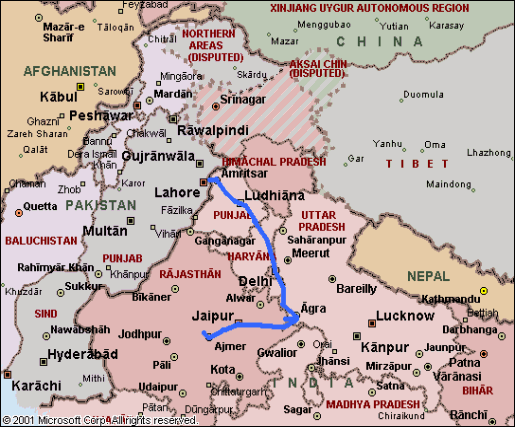
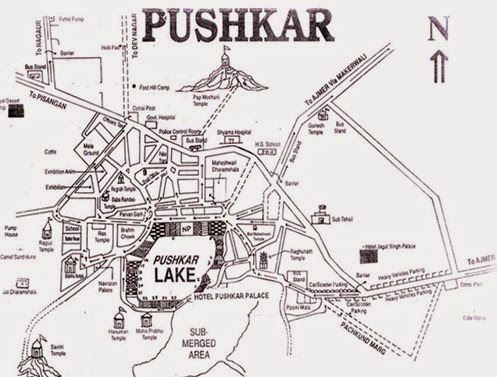
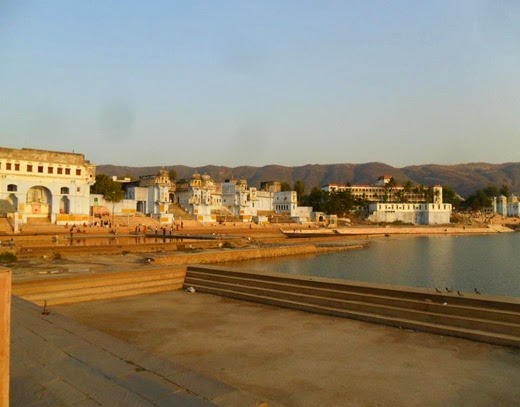
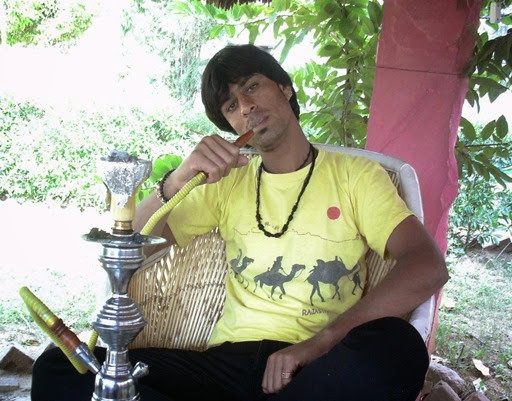
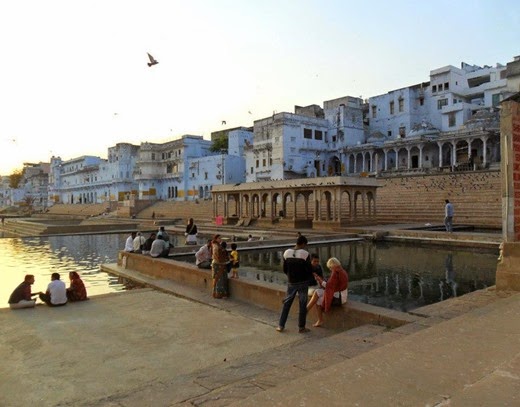
Thanks for Sharing Over Pushkar History in Rajasthan.
ReplyDeleteThis is amazing blog, thank you for sharing with us keep posting. - JCR CAB
ReplyDelete